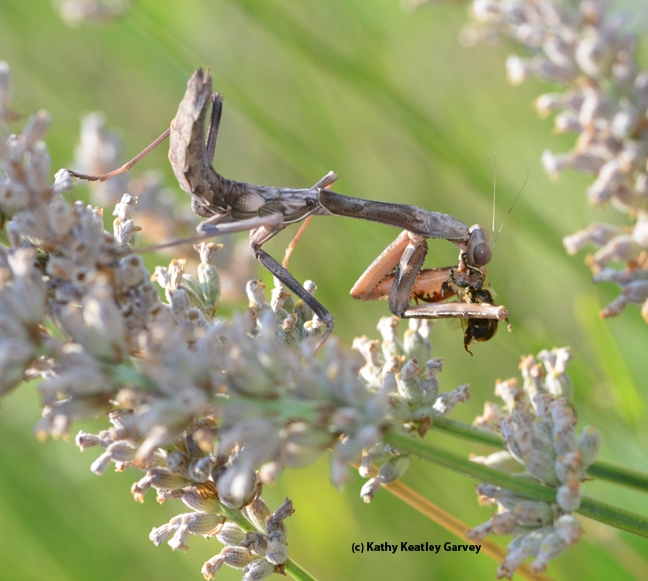Some folks dislike photos of praying mantids snagging, killing and eating their prey. Well, often the "eating" part comes before the "killing" part.
Still, they have to kill to live. We all do.
Or someone does it for us.
We've been seeing lots of praying mantids in our bee garden, especially among the lavender (Lavandula), Mexican sunflowers (Tithonia) and passionflower vine (Passiflora). Most of them are lying in wait. Others, with spiked forelegs gripping their prey, are eating.
They have to kill to live.
We encountered this one (below) camouflaged in the lavender patch. Lynn Kimsey, director of the Bohart Museum of Entomology and professor of entomology at the University of California, Davis, thinks it may be a native species; it looks like some she's seen by the Yolo Causeway.
Praying mantids, of course, are insects and belong to the class Insecta, and the order Mantodea.
BugGuide.Net describes them as "Relatively large, elongate insects up to several inches long. Typical features include triangular heads with large compound eyes set on either side and usually three ocelli in between; very flexible articulation between the head and prothorax providing great mobility and allowing a mantid to 'look over its shoulder''; raptorial forelegs used to capture prey." California has some 20 species in 12 genera.
The word, mantis, is Greek for "soothsayer, prophet." (Maybe it should be "sure slayer.")
And yes, they can be highly cannibalistic. When they emerge from an ootheca or egg case, they show their brotherly love and sisterly love by eating one another.
BugGuide.Net says that the larger mantids can prey on small birds, lizards, and amphibians. Indeed, they can. YouTube displays videos of mantids attacking and eating hummingbirds.
We spotted an ootheca last winter on our barnlike bird house. Birds don't inhabit it. It's easy to see why.
Attached Images:

